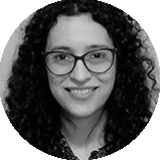Maria Juliana Gandini

2023-2024
François Chevalier Fellow
Universidad Nacional de Luján - Universidad de Buenos Aires
Second-hand knowledge. Representations of the Río de la Plata in their European textual derivations (16th century-early 17th century)
Biography
María Juliana Gandini holds a Ph.D. in History from the University of Buenos Aires. She works as a researcher at the National Council of Scientific and Technical Research of Argentina and as a lecturer in Theories of History (National University of Luján) and Colonial Latin American Literature (University of Buenos Aires).
In 2019 she won the first prize of the Asociación Argentina de Investigadores en Historia for her Ph.D. thesis. Her research analyses the production of representations and knowledge about the Río de la Plata and Florida, two of the most marginal and disputed regions of the New World during the sixteenth and seventeenth centuries. To do so, it considers the testimonies of their direct witnesses, their processes of reception in Europe and the various mechanisms that made it possible to produce reliable knowledge about the territories and native societies overseas. The long-term aim of these enquiries is to construct a geographically “extended” history of classical modernity, which includes American experiences in the genealogy of the production and validation of knowledge.
Projet de recherche
Research project
The project proposes to study how the histories of the conquest, cosmography and travel accounts published in Spain and Europe during the sixteenth and early seventeenth centuries appropriated —and thereby transformed— the representations of nature and native societies of the Río de la Plata produced by their first European witnesses (1516-1555). Although these firsthand testimonies circulated in a relatively restricted way within the Spanish context, their inclusion in published works with a European projection triggered new receptions in very diverse temporalities and geographies. The study of the processes of resignification involved in the production of second-hand representations of the Río de la Plata —a direct result of the aforementioned processes of reception— illuminates the strategies, interests and political and cultural frameworks that conditioned the apprehension of a particular sector of the New World in the Old World. Thus, this case study outlines a chapter in the broader story devoted to the reconstruction of the early-modern genealogy of knowledge about the world and its inhabitants.
Sélection de publications
Selected publications
- 2022. ¿Quiénes construyeron el Río de la Plata? Exploradores y conquistadores europeos en el lugar donde se acababa el mundo, Buenos Aires, Siglo XXI Editores de Argentina.
- 2022. “Experiencia, cosmografía e instrucción. El problema de representar al Nuevo Mundo según Alonso de Santa Cruz”, Folia Histórica del Nordeste, 43, pp. 25-52.
- 2021. “Estrategias para traducir la alteridad: los nativos rioplatenses entre sus testigos directos y la Historia general de los hechos de los castellanos de Antonio de Herrera y Tordesillas (1536-1615)”, Prohistoria, XXIII (34), pp. 75-104.
- 2020. “El cronista mayor y sus fuentes: Antonio de Herrera y Tordesillas, editor del piloto Diego García de Moguer”, Temas Americanistas, 45, pp. 296-318.
- 2019. “Bárbaros en la frontera norte del Nuevo Mundo. Los usos de la tradición clásica en la representación de los nativos de la Florida entre testimonios directos y recepciones europeas (1528-1615)”, Eadem Utraque Europa, 15 (20), pp. 23-62.






